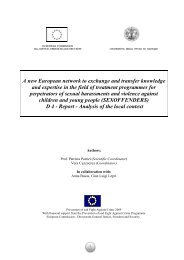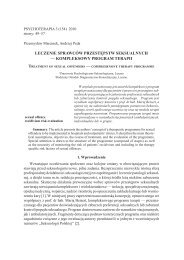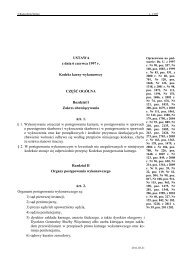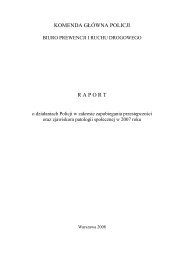ENGLISH
ENGLISH
ENGLISH
- No tags were found...
Create successful ePaper yourself
Turn your PDF publications into a flip-book with our unique Google optimized e-Paper software.
Research ReportsThe interviewThe interviews were conducted with 8 agencies on the regional level (4 intervention centres, 2 women’s support services, 1police unit and 1 child protection service unit). The Network of Intervention Centres is the only responding agency working ona national level. The interview partners were 7 women and 2 men.Identifying high risk victimsAll participants answered that they identify high risk victims of domestic violence through personal contacts with the victim.Additionally, 6 respondents used written reports, 4 took the severity of the injuries into account and 2 also assessed theevidence at the crime scene.The indicated number of high risk cases of intimate partner violence ranges from 348 cases to 11 cases in 2009. Oneintervention centre was unable to give a case number:’The high risk victims are not counted separately – there are not many.’Table 1: How many cases did you identify in 2009?Police regional 16Women’sSupportServicesInterventionCentresnetwork 59regional 348regional –regional31ChildProtectionAuthoritiesregionalregionalNetwork (national)regional119233662Of the 9 respondents, 7 are using risk assessment instruments. The police do not use such instruments because ’There is noneed unless we receive such a complaint/signal’ 4 . One intervention centre did not answer this question.Which instruments are used? The Big 26 (DAIP) was used by 3 respondents, 3 relied on the Danger Assessmentdeveloped by J. Campbell (DA) and 2 used the SARA tool. Five used a self-developed instrument, mainly a guideline foran indepth interview:’Self-developed method – Dynamic interview. In all the cases of domestic violence part of our work is concentrated on dangerassessment and on safety planning for the victim in order to manage the risk. We examine the severity, frequency and the formand circumstances of the violence committed. We also examine the use of alcohol, and whether the children were witnesses4Interviewer’s note: ’…due to the legal definitions, the risk assessment is made by the police mainly and predominantly within the Penal Procedure where they consider thedangerousness of the perpetrator and of the crime committed as well as how grave the crime is. The criminal approach to the risk assessment is focused on the perpetratorand the objective results (harms and damages) of the crime, including the personality of the perpetrator and the level of his dangerousness.’P 28 | PROTECT | Good practice in preventing serious violence, attempted homicides, including crimes in the name of honour, and in protecting high risk victims of gender based violence






